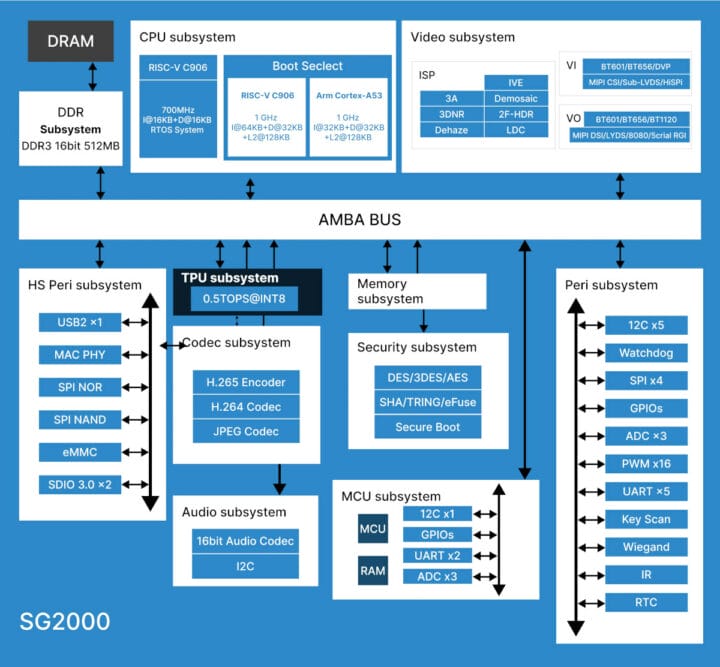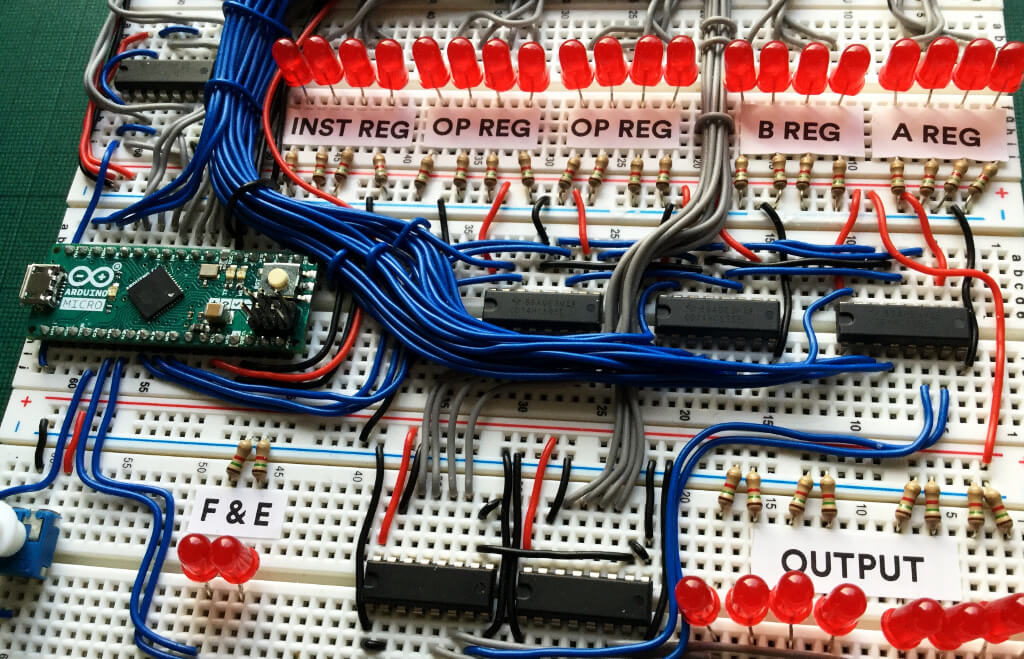07

SOPHGO SG2000 and SG2002 are new SoCs featuring a bunch of RISC-V and Arm cores capable of running Linux, Android, and FreeRTOS simultaneously, and to maximize the fun an 8051 MCU core is also in the mix along with a 0.5 TOPS (SG2000) or 1 TOPS (SG2002) AI accelerator. More specifically we have one 1GHz C906 64-bit core capable of running Linux, one 1GHz Arm Cortex-A53 for Linux or Android, another 700 MHz C906 RISC-V core for FreeRTOS, and a 300 MHz 8051-core for real-time I/Os, as well as 256MB or 512MB SiP DRAM. The chip is designed for AIoT applications such as Smart IP cameras, facial recognition, and smart home devices. SOPHGO SG2000/SG2002 specifications: CPU cores 1x C906 64-bit RISC-V core @ 1GHz 1x C906 64-bit RISC-V core @ 700MHz 1x Arm Cortex-A53 core @ 1GHz MCU – 8051 8-bit microcontroller core @ 25 to 300 MHz with 6KB [...]
The post SOPHGO SG2000/SG2002 AI SoC features RISC-V, Arm, and 8051 cores, supports Android, Linux, and FreeRTOS appeared first on CNX Software - Embedded Systems News.





